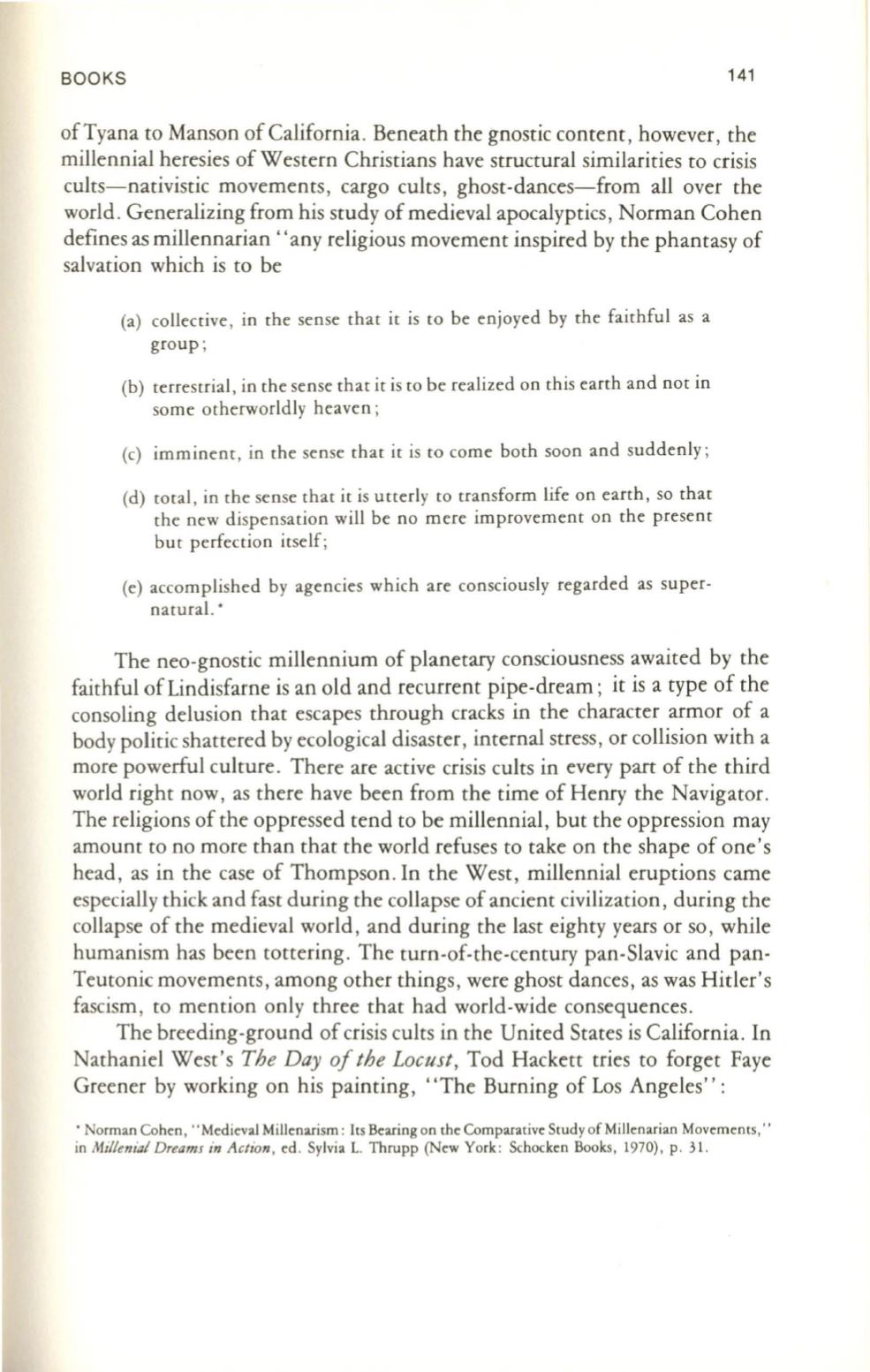
BOOKS
141
of Tyana to Manson of California. Beneath the gnostic content, however, the
millennial heresies of Western Christians have structural similarities to crisis
cults-nativistic movements, cargo cults, ghost-dances-from all over the
world. Generalizing from his study of medieval apocalyptics, Norman Cohen
defines as millennarian "any religious movement inspired by the phantasy of
salvation which is to be
(a) collective, in the sense that it is to be enjoyed by the faithful as a
group;
(b) terrestrial, in the sense that it is to be realized on this earth and not in
some otherworldly heaven;
(c) imminent, in the sense that it is to come both soon and suddenly;
(d) total, in the sense that it is utterly to transform life on earth, so that
the new dispensation will be no mere improvement on the present
but perfection itself;
(e) accomplished by agencies which are consciously regarded as super–
natural. •
The neo-gnostic millennium of planetary consciousness awaited by the
faithful ofLindisfarne is an old and recurrent pipe-dream; it is a type of the
consoling delusion that escapes through cracks in the character armor of a
body politic shattered by ecological disaster, internal stress, or collision with a
more powerful culture. There are active crisis cults in every part of the third
world right now, as there have been from the time of Henry the Navigator.
The religions of the oppressed tend to be millennial, but the oppression may
amount to no more than that the world refuses to take on the shape of one's
head, as in the case of Thompson . In the West, millennial eruptions came
especially thick and fast during the collapse of ancient civilization, during the
collapse of the medieval world , and during the last eighty years or so, while
humanism has been tottering. The turn-of-the-century pan-Slavic and pan–
Teutonic movements, among other things, were ghost dances, as was Hitler's
fascism , to mention only three that had world-wide consequences.
The breeding-ground of crisis cults in the United States is California. In
Nathaniel West's
The Day of the Locust,
Tod Hackett tries to forget Faye
Greener by working on his painting, "The Burning of Los Angeles" :
. Norman Coh<n, .. M<di<val Mill<narism : Its B<aring on th< Comparativ< Study of Mill<narian Mov<m<nts,"
in
Millenial DreamI in Action,
<d . Sylvia
L.
Thrupp (N<w York: Schock<n Books, 1970). p. 31.


